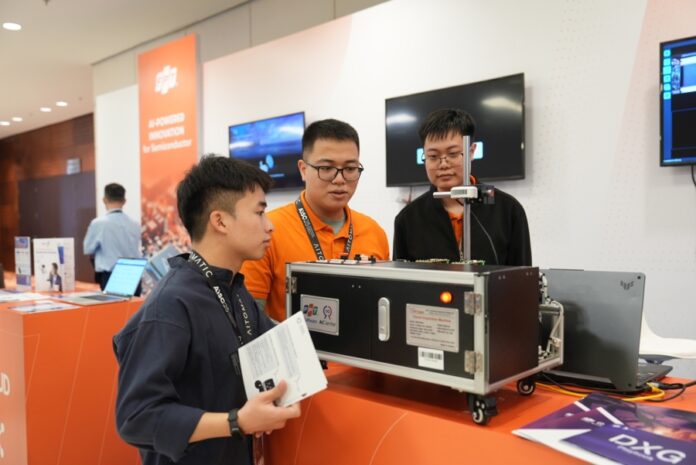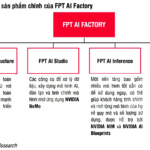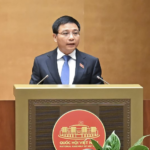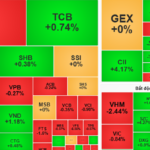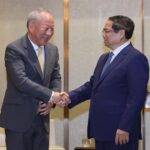Chairman of FPT’s Board of Directors, Truong Gia Binh, initiated the formation of the Au Lac AI Alliance, a strategic initiative to connect Vietnamese intelligence, resources, and aspirations. On this occasion, Mr. Vu Anh Tu, FPT’s Technology Director, shared his thoughts on the sidelines of the Au Lac AI Alliance launch.
Why did FPT take the lead in establishing the Au Lac AI Alliance?
There are five critical factors for effective and sustainable AI development: data, algorithms, computing infrastructure, legal framework, and ethics. These present significant challenges for businesses going it alone.
FPT has traveled a long journey of over a decade to establish a comprehensive AI ecosystem, ranging from research capabilities, collaborations with prestigious AI research institutes and organizations globally, such as Mila, Landing AI, and the National University of Singapore, to a diverse range of AI solutions, a large talent pool, and superior computing infrastructure. It hasn’t been an easy road.
Our AI research group, back in 2013, had fewer than 10 people, figuring out algorithms and training models to create the most rudimentary AI products. I believe other businesses, like FPT, have also faced challenges before establishing their strengths.
However, AI research and development is a long-haul endeavor. Each business and organization has its strengths, but there are also gaps that need to be filled with knowledge and experience from the community. To go far, we must go together. This is why Chairman Truong Gia Binh of FPT took the initiative to form the Au Lac AI Alliance, a strategic move to unite Vietnamese intelligence, resources, and aspirations.
We were pleasantly surprised and touched that within just two weeks of sharing our intention to establish the Au Lac AI Alliance, more than 20 businesses, startups, and universities registered to join. This is the Alliance’s initial success, and we believe it will quickly gain new members.
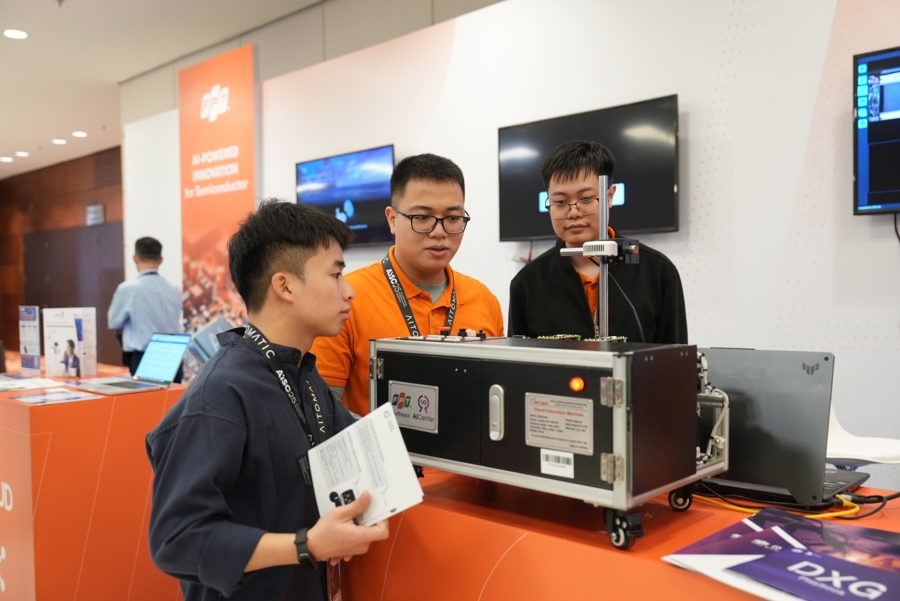
One of the main goals of the Au Lac AI Alliance is to develop a large-scale Vietnamese language model, Au Lac LLM. Why is it necessary to have a large-scale Vietnamese language model?
The AI race is evolving. Governments worldwide are prioritizing sovereign AI designed to align with a nation’s interests, prioritizing security and cultural values. One of the first steps in developing sovereign AI capabilities is building local language models (LLMs). LLMs are not just technology but have become strategic national assets, similar to the digital era. A local LLM reduces dependence on foreign LLMs and addresses specific geographic, historical, cultural, and linguistic considerations.
Most well-known LLMs today originate from the US. Other countries have also developed their local LLMs.
The United Arab Emirates (UAE) has an AI platform (Falcon) that excels in processing modern Arabic and local dialect languages.
South Korea has a dedicated AI product for Koreans (HyperCLOVA X), capable of deeply understanding Korean language and culture.
India launched BharatGPT, which has an in-depth understanding of Indian culture, from festivals and customs to language usage across regions, and can be customized by industry.
Singapore’s National Multimodal LLM Programme (NMLP) invests tens of millions of dollars, providing high-performance computers to institutes, universities, and businesses to develop an LLM that aligns with Southeast Asian culture and languages (SEA‑Lion).
Not investing in an LLM means wholly relying on foreign technology platforms, from data and algorithms to how AI intervenes in work, life, and the information people access daily.
To maintain economic and cultural sovereignty, Vietnam needs an LLM developed by Vietnamese. The Au Lac AI Alliance aims to create the Au Lac LLM as a foundation for building AI applications capable of handling Vietnamese language accurately, naturally, and culturally appropriately, thereby enhancing national knowledge and driving economic development.
What challenges did businesses face in developing Vietnamese LLMs before the Alliance’s formation? How will the Au Lac LLM help address these challenges?
Developing an LLM requires high-quality training data, robust computing infrastructure (GPU/TPU), advanced algorithms, a diverse team of experts, substantial financial resources, and rigorous testing processes. This is a challenging task for any country, business, or organization. Therefore, the Alliance aims to harness the collective strength of the business community, startups, and technology experts to tackle these challenges together.
As the leader in the information technology industry, what is FPT’s specific role in the Alliance?
Each Alliance member has its strengths, and some are already industry leaders. I hope the Alliance will collectively build an open and transparent AI community where individuals, organizations, and businesses can freely access and use the Alliance’s publicly available assets, including source code, data, and models, even for commercial purposes. This will foster creativity, widespread AI application, and the realization of national AI sovereignty.

At the launch, the first members of the Alliance made explicit commitments. MobiFone pledged to dedicate all possible resources to the Alliance’s success. MISA promised to contribute data experts, especially in finance and accounting. BKAV offered to work on AGI – artificial general intelligence. Zalo affirmed that it would contribute its experience in successfully building a purely Vietnamese AI model, system architecture, and the Vietnamese language capability assessment framework with over 10,000 questions, VMLU.
The businesses are ready to contribute to developing large language models (LLMs) capable of handling Vietnamese language accurately, naturally, and culturally appropriately, thereby enhancing national knowledge and driving economic development.
FPT also commits to sharing its core technology and models with the community, free of charge. We will open up our entire platform and core technology, such as the Large Language Model (LLM) used in our FPT.AI platform, for all Alliance members to develop and utilize.
Additionally, FPT will establish a shared laboratory to support small businesses, research institutes, schools, and startups in accessing data, tools, and, most importantly, training programs. We will also propose groundbreaking policies on regimes, such as the sandbox mechanism, allowing AI experimentation in sectors like healthcare, education, and finance.
As you mentioned, the Alliance already has over 20 initial members. What else does the Alliance need from the business community, institutes, and universities to achieve its goal of building an LLM for Vietnamese by Vietnamese?
On behalf of the Alliance, we cordially invite all businesses, research institutes, universities, and the technology community to join us in building the foundation for a self-reliant, sustainable, and culturally rich Vietnamese AI future.
Investing in AI development is a long-term endeavor. Alliance members can contribute their strengths, including financial resources, infrastructure, data, and intellectual property, such as algorithms and LLM-related patents and human resources. The Alliance welcomes new members who share our vision.
The AI Factory’s Handshake: Will it Bring an “Evolutionary Leap” in Revenue for FPT?
SSI’s AI infrastructure is a comprehensive, end-to-end solution for developing AI capabilities, outperforming its competitors in Japan. FPT AI Factory offers a robust and dynamic platform, providing organizations with the tools and resources needed to harness the power of artificial intelligence. With its cutting-edge technology and innovative features, FPT AI Factory empowers businesses to stay ahead of the curve in the ever-evolving world of AI.
Unveiling CMC’s AI Transformation Strategy: “Empowering Your AI Journey”
On September 11, in Hanoi, the CMC Technology Group hosted an event to unveil its AI transformation strategy, titled “Enable Your AI-X.”

























